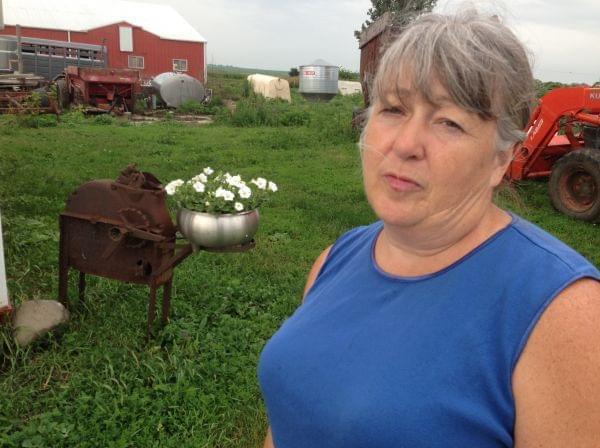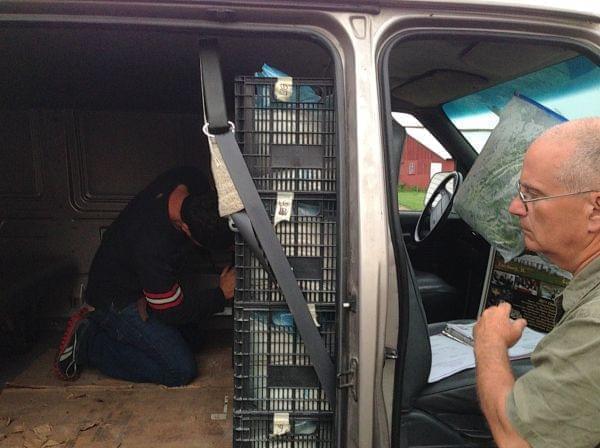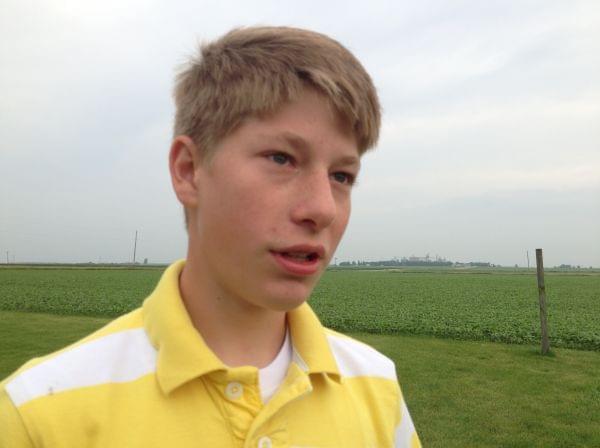Food Hubs Try To Grow Local Farms
Restaurants across the country have jumped on the local food bandwagon. They’re trying to source more of their produce from nearby farms, but it's not easy. Enter: Food hubs.
Food hubs are popping up across the country. These food processing and distribution centers make it easier for restaurants, grocery stores and others to buy local food. The U.S. Department of Agriculture estimates that there are more than 220 of them in 40 states plus the District of Columbia.
Food hubs connect producers to consumers. They're not only helping struggling farms, but also bringing in new talent to agriculture.
Donna O’Shaughnessy and her husband, Keith Parrish, are first-generation farmers in rural Chatsworth, Ill., about two hours south of Chicago. They sell dairy and meat, and raise a host of animals, including cows, about 50 red waddle hogs, and a few colorful peacocks.
“Because we’re certified organic, we cannot use any herbicides or pesticides,” she explained. “Peacocks love ticks. They eat lots and lots of ticks.”
O’Shaughnessy was a full-time nurse for many years, while her husband focused on the farm. They ended each year in the red. But business took off about five years ago, with restaurant owners as far away as Chicago putting in order requests.
“For years, we did not think we could ever be self-supportive, totally sustainable – that we would always need my nursing income,” O’Shaughnessy said. “But then when things really started to pick up with, we made that decision I would retire from nursing and ironically, that’s when we started to turn a profit because I was able to do the marketing.”

After joining a food hub, Donna O’Shaughnessy was able to quit her job as a nurse to work full-time on her farm. (Sean Powers for Harvest Public Media)
While she concentrated on that part of the operation, her husband focused on other tasks on the farm. It was all possible because they joined a year-round local food hub called Stewards of the Land, started in 2005 by Marty Travis, a farmer in nearby Fairbury, Ill.
Stewards of the Land is a homegrown operation.
“Peppermint, borage flowers, radish pots,” Travis said on a recent morning as he loaded a van with locally grown food.
“That should be it,” replied his son, Will, who kept track of each shipment.

Will and Marty Travis stock their van with roughly 1,500 pounds of food from about a dozen area farmers. (Sean Powers for Harvest Public Media)
The two of them stocked the van with roughly 1,500 pounds of food from about a dozen area farmers who filled a walk-in cooler the night before with fruits and vegetables, poultry and meat, and grains and flour. Travis drives the shipment to restaurants and grocery stores throughout central Illinois and Chicago.
Basically, Travis is the middleman between the producer and consumer. A farmer himself, he took on this role to fill a hole in the market.
“As we go, we can incubate these farms, and get them on their feet to do their own things,” he said.
Travis and his wife formed this food hub and started a second one a few years later. Members include about 40 small family farmers, each of whom pays a small fee to join. Travis said they get cheaper liability insurance, access to a much larger pool of businesses and farmer training.
A big part of the food hub model, Travis said, is helping drive up interest in agriculture.
“I would say the new generation of farmers are a little over half the group,” Travis explained. “Many of them were under the age of 18 when they joined. We’re very interested in growing great produce, but we’re also very passionate about growing great farmers.”
One up-and-coming farmer is Derek Stoller, 15, of Fairbury. He joined Stewards of the Land when he was just 9-years-old and growing Indian corn. Since then – working in his parents’ backyard and putting his family to work – he has moved on to other things like beets, parsley and carrots.
“Last year, I grossed around $15,000,” he said.
Stoller admits he has no idea if he will stay in agriculture forever, or what he will do with the rest of the life. When asked what surprises him most about agriculture, he said, “That you can grow off of a little patch of land, and make a lot of money off of it.”

Derek Stoller, 15, joined the food hub when he was just 9-years-old. He said his small plot grossed $15,000 last year. (Sean Powers for Harvest Public Media)

Stoller initially grew Indian Corn, but his plot now also includes beets, parsley carrots. (Sean Powers for Harvest Public Media)
“We recognize that there is significant opportunity for small entrepreneurs for small businesses to support local and regional food systems,” said Doug O'Brien, the USDA's Acting Under Secretary of Rural Development.
“We have a fantastic national and international food system that supplies food from across the country and across the world,” O’Brien said. “But for those who are willing maybe to pay a little bit more for food that comes from close by, that structure is lacking, but it’s growing fast. Food hubs respond to that call.”
The USDA recently awarded a nearly $100,000 grant to set up three food hubs in Central Illinois.
One of the people behind that effort is Terra Brockman, who is with the Edible Economy Project, a group working to create a community-owned food hub and farmer-owned cooperative serving farmers and consumers in a 32-county region of central Illinois.
She estimates the region loses about $5 billion annually (PDF) because money is spent on food and agricultural inputs from outside the area.
“It used to be that when we talked about rural development, we talked about prisons and factories, and you know we’re finally at the point where it’s like, ‘Hey, look around. In Illinois, when you’re talking rural, you’re talking farming,”’ Brockman said. “Particularly this kind of small farming, direct marketed, feed your community kind of farming, where the money does stay and circulate within your community.”
O’Brian expects the USDA to continue supporting food hubs. Though some farmers worry that could lead to more regulations, even with federal support. But at least for now, that does not appear to be keeping food hubs from growing.
Food hubs in the Midwest
Find a food hub near you on the map below
Data courtesy of USDA (PDF)

